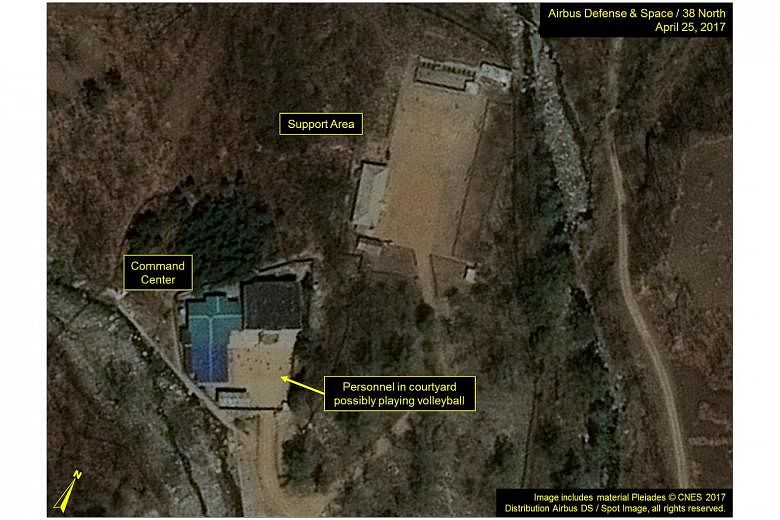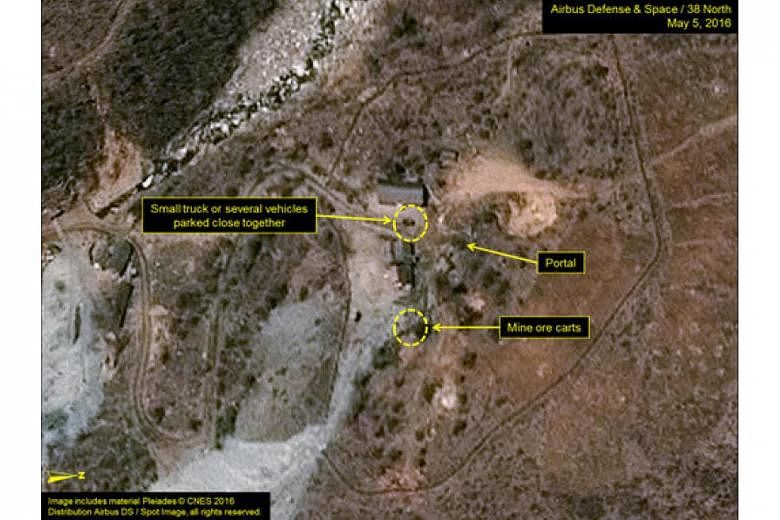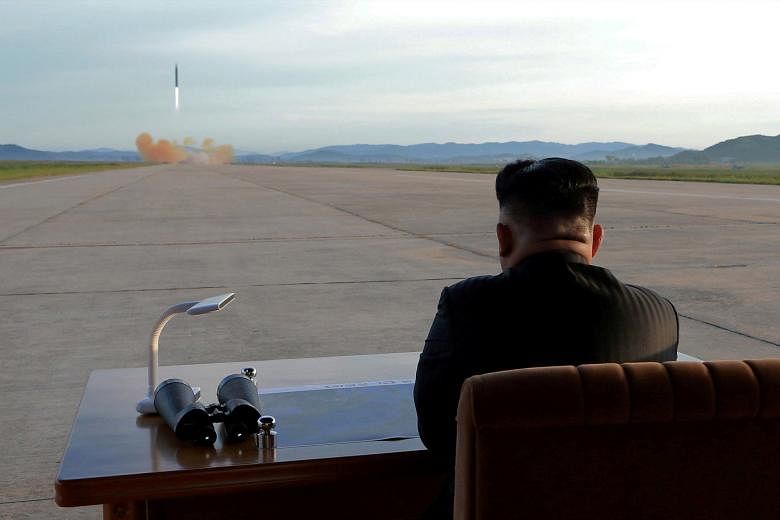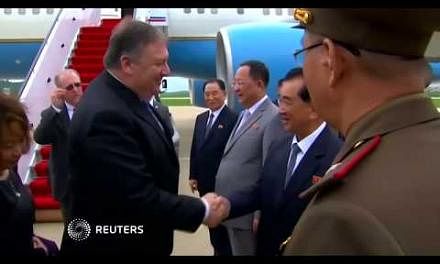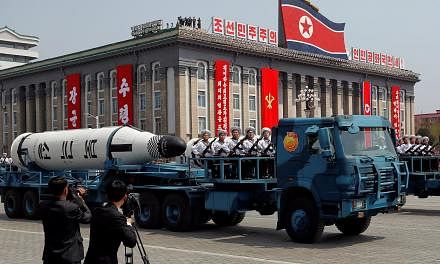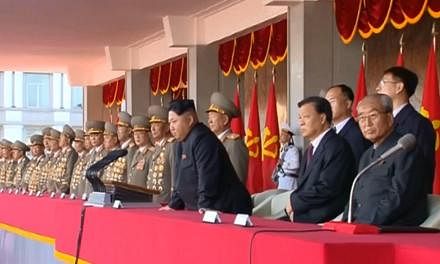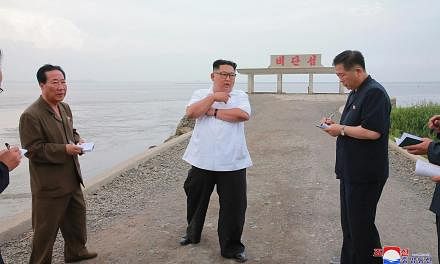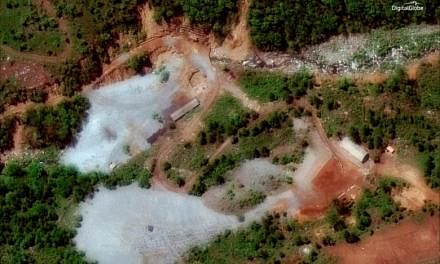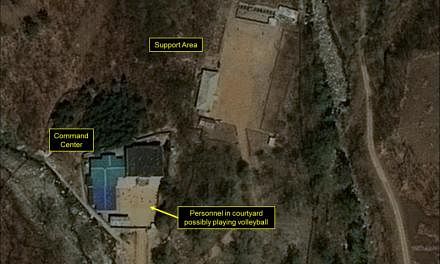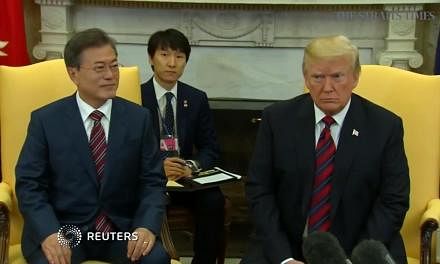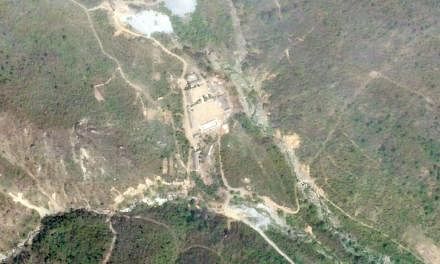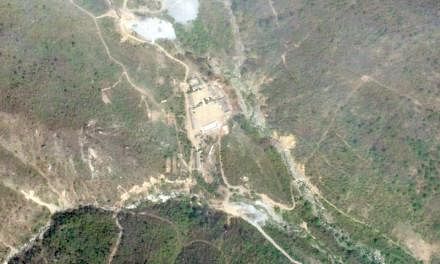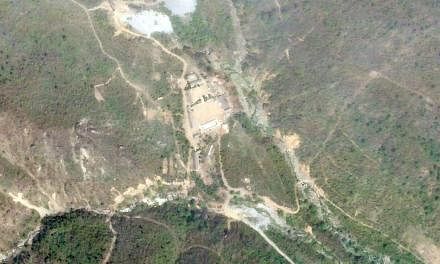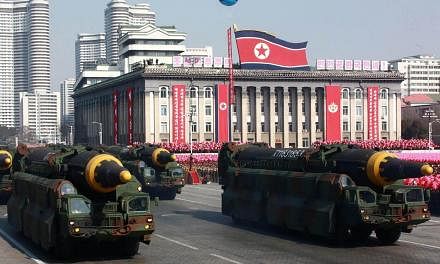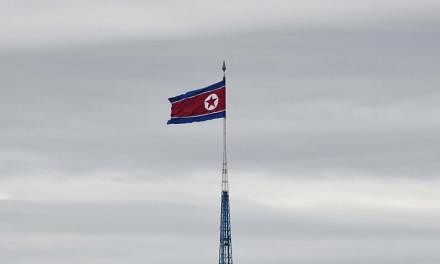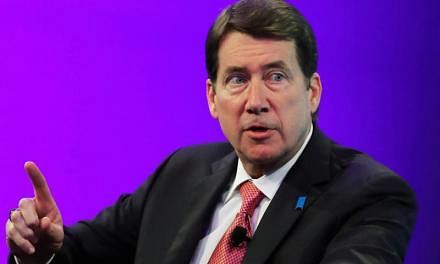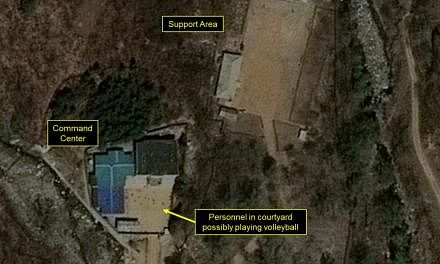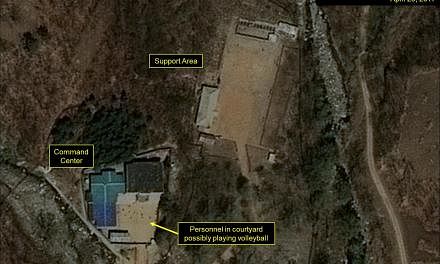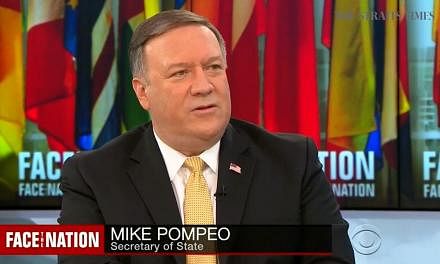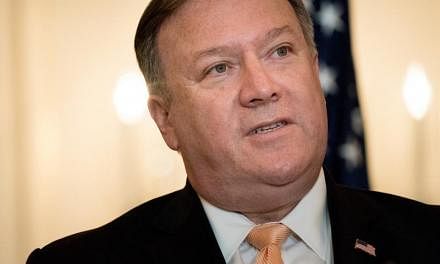(BLOOMBERG) - When North Korea unleashed an earth-shaking nuclear bomb of as much as 250 kilotons on Sept 3, one man wasn't fazed.
Almost 6,000 miles (9,650km) from Pyongyang, in Colorado, Joseph S. Bermudez Jr has for years watched the isolated regime's nuclear testing facility, peering at blobs and shadows on high-resolution satellite images.
Slight changes - movements of vehicles, equipment and people at the mountain fortress - matter. From February, Bermudez and his colleagues spotted activity at one of the three main tunnels leading to underground testing bunkers.
"We knew at the beginning of the year that they would test," said Bermudez, who writes assessments for the Johns Hopkins School of Advanced International Studies' North Korea website known as 38 North. "So when that day came, in fact my reaction was, 'oh, they finally tested'."
That blast, the regime's most powerful detonation to date, was another step in its efforts to acquire the ability to hit the continental US with a nuclear-tipped warhead. Alongside the atomic programme, leader Kim Jong Un has this year launched a succession of ballistic missiles, each flying further or higher than the last.
Kim's actions have also set off a tense war of words with US President Donald Trump, who is exasperated by the regime's dogged pursuit of nuclear weapons in the face of global sanctions and condemnation. With Trump threatening to attack North Korea if provoked, parsing the regime's actions has become ever-more important.
Bermudez is one of a handful of analysts in the US and Asia who peer into Kim's backyard on a daily basis, poring over commercial satellite images and other data. In such a volatile environment, their assessments can help temper fears or keep in check speculation sparked by North Korea's relentless propaganda machinery, with its fiery pledges to annihilate the US.
"Typically what we've identified is that prior to a test, they conduct some additional excavation in the tunnels," said Bermudez. "They move more equipment in and you see more people moving around."
In experts' crosshairs is Punggye-ri, an active test site built in a secluded mountain valley north-east of Pyongyang. The area, the site for all six of North Korea's nuclear blasts, has a "virtually infinite amount of space" for underground testing and its granite bedrock is ideal for containing large explosions, said Jeffrey Lewis, director of the East Asia Nonproliferation Program at the Middlebury Institute of International Studies at Monterey, California.
Examined over time, a picture emerges of what normal or suspicious activity at Punggye-ri looks like. One ominous sign is when the bustle grinds to a halt: Vehicles, troops and workers withdraw and the site appears "tidier".
"That is often an indicator that things have been buttoned down and they're ready to do something and they're just waiting," said Jack Liu, a defence technology expert with 38 North.
The explosion site can be primed well before Kim orders a detonation. North Koreans dig tunnels far in advance and can detonate at any time, said Lewis.
For North Korea watchers, the quality of pictures is crucial. The highest commercially available resolution is 30cm per pixel, which is enough to distinguish buildings, roads, military equipment, and the color of vehicles. It is not detailed enough to see people's faces.
Images can be bought from companies including US-based DigitalGlobe and France's Airbus Defence and Space, whose satellites take images of every inch of the planet multiple times a day for use in activities such as mapping, disaster monitoring and national security. The images are so large and contain data such as coordinates, heat signatures and topography, that they can take hours to download and require special software to process.
Start-ups such as Planet Labs, which is based in San Francisco and has nearly 200 satellites in orbit, offer image resolutions of up to 80cm per pixel. Punggye-ri, naval shipyards and the Yongbyon uranium research facility are among the sites monitored by analysts.
Specialised sensors on some satellites paint a more detailed picture. Lewis's team at the James Martin Center for Nonproliferation Studies has created a 3D image of Punggye-ri's underground bunkers with help from a Japanese government-funded sensor on a Nasa satellite. CNS projects the tunnels branch out from a main artery.
Analysts also rely on years of expertise in North Korean culture, scientific papers and the subtext of the regime's propaganda. "The dirty secret of analysing satellite imagery or satellite data is that none of it makes any sense unless you have some cultural knowledge," said Lewis.
Sensors picked up how Mantap, the 2,205m mountain where Punggye-ri is located, shifted after the Sept 3 launch. The force of the blast caused the mountain "to move a little bit", according to Lewis. Numerous landslides in the area were detected by 38 North.
It's impossible however to predict exactly when a blow-up may take place.
"It's not an exact science," says Jenny Town, managing editor of 38 North. "If we see a small blob on the spoil pile on the track, we would assume it's a rail cart. But we can't actually verify that in any way other than the fact that's what we would normally see there on the rail track is a rail car."
And Pyongyang has stepped up efforts to conceal preparations, using camouflage paint, netting and decoys and doing construction work at night. Clouds and heavy rain can obscure a satellite's view.
"When you see something you have to ask why you're seeing it," Town said. "Are they showing us this to basically threaten without having to verbally threaten a nuclear test?"
Still, there are things it can't hide. Images taken days after the sixth nuclear explosion up to November showed a pick up in activity at an as-yet unused tunnel complex, which could be associated with new test preparations.
Lewis said the takeaway is Punggye-ri is constantly being prepared for tests, which shows Kim is hellbent on proceeding regardless of Trump's threats.
Given North Korea's firing of another intercontinental ballistic missile on Nov 29, Lewis said the entire US is already in range.
"That missile went high enough and far enough that, if it had been fired at the US it could have hit Mar-a-Lago", Trump's Florida-based resort, he said.
"It's too late to stop the programme," he added. "The time to stop the programme was 10 to 15 years ago. They're going to have thermonuclear weapons on an ICBM that can target the United States."
